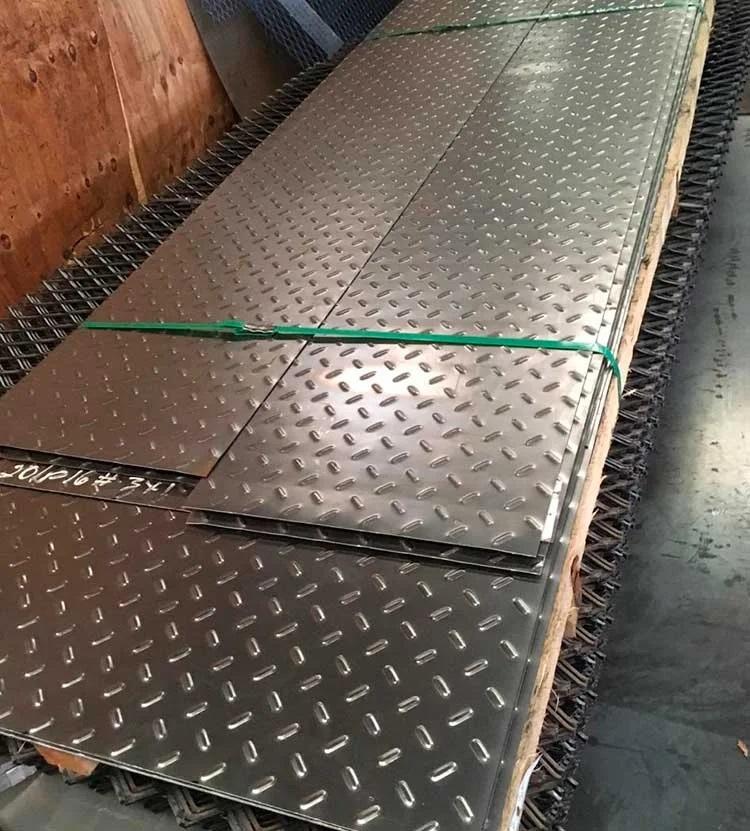There are several reasons for the famous and growing popularity of metal in the architecture and construction industry..
Since the introduction of Bessemer process, which allowed the start of its mass production, parts that use metal as raw material received a high cost benefit in the market, being applied in different sectors of activity and serving different purposes.
exist, for example, various types of metal sheets that you can choose from when building both an outdoor and outdoor project.
Read on to discover the advantages and applications of sheet metal types – especially in the world of decoration.
How different types of sheet metal are made
As we will see in detail, There are three main types of sheet metal: to perforated plate, to expanded plate and the checkered plate. These parts are usually made of steel or aluminum and can be produced using different methods. – each suited to specific types of projects and manufacturing needs.
The most common methods include lamination, extrusion, the foundry, forging and cutting with laser or plasma. Depending on the properties of the metal and the specifications of the desired sheet, one or more of these techniques may be used during production in a steel factory, where the product is usually taken to the customer after completion.
The lamination is a process in which metal is passed between rollers to reduce its thickness and produce a flat sheet. This method is used to produce sheet metal with a consistent thickness.
The extrusion involves forcing metal through a die or die into the desired shape. It is often used to create sheet metal with specific shapes or to produce types of sheet metal with thicker walls.
The foundry, on the other hand, causes metal to be melted and poured into molds to create sheet metal with complex or custom shapes, while in forging the metal is heated and shaped by hammering or pressure to create the desired sheet metal.
Finally, the laser or plasma cutting is a method used to cut existing metal sheets into specific shapes and desired sizes.
Types of sheet metal
Given this highly technological and constantly evolving scenario, The possibilities we have for transforming environments with these pieces are almost limitless. In addition to perforated sheet metal, expanded sheet and checkered sheet, we can also find its variations in the form of upset plates and plates pro-childhood, for example.
The quantity referring to the types of metal sheets available on the market is due, largely, the versatility of metal, which can be molded from its design into virtually any structure needed. Its durability properties leave nothing to be desired either. – since the steel, just beautiful, by itself, It is resistant to adverse weather conditions (like rain and humidity) even in outdoor environments.
Even so, to prevent early oxidation and corrosion, It is possible to apply extra security measures to different types of metal sheets, as is the case with galvanizing. This procedure involves immersing the piece in a zinc bath., which creates a protective layer around the main surface and, Consequently, prevents contact with the external environment for a long time. How zinc has an even stronger composition in hostile scenarios, This means that rust will not be the problem of the near future.
See below a comparison between these three main models:
Sign up to receive Decor News first!
Perforated sheet
The perforated plates are created through a drilling process. A flat sheet of metal is placed in a press – where a die with specific hole patterns is used to drill into the metal. These holes can vary in shape (round, square, hexagonal), size and spacing, depending on the desired application. Perforated sheets are common in industrial applications, like filters, sieves, protections and even decorative wall elements.
The main advantages of perforated sheets include:
- natural ventilation and lighting;
- filtering;
- lightweight;
- and easy customization.
Expanded plate
In the manufacture of expanded sheets, a flat sheet is cut and then stretched in a special press. This creates irregular openings and diamond patterns, hexagons or other geometric shapes, creating a plate with “hollow” areas. This expansion of the metal makes the sheet lighter – but still maintains its structural integrity – often used on stairs, platforms and wall coverings.
The main advantages of expanded sheets include:
- strength and resistance against mechanical shocks;
- ventilation and drainage;
- and versatile design.
Checkered plate
The checkered plates are made through a lamination process in which the metal sheet is passed between rollers with high relief patterns, forming diamond- or square-shaped patterns on the surface of the plate (very similar to the coin stamping process). This checkered pattern provides grip and slip resistance, making it ideal for applications where security is important, like non-slip stair treads, industrial floors and public walkways.
The main advantages of checkerboards include:
- non-slip features;
- durability and resistance in high traffic environments;
- and ease of cleaning.
At the end of the day, sheet metal is widely used in the automotive industry for bodies and structural components, in civil construction for facades and cladding, in the naval industry for the manufacture of vessels and platforms and in the electronics industry for enclosures and components. In addition to, of course, of applications in furniture, renewable energy, chemical industry and agricultural equipment, playing fundamental roles in various areas of construction and decoration.
Find more information and decorating tips with us
You are invited to read our other decor and living articles. There are many elements, materials, furniture and styles that complement the visual aesthetics of sheet metal – So be sure to stay up to date with trends and suggestions from those who love the subject.

Content made in partnership with Bepex.



